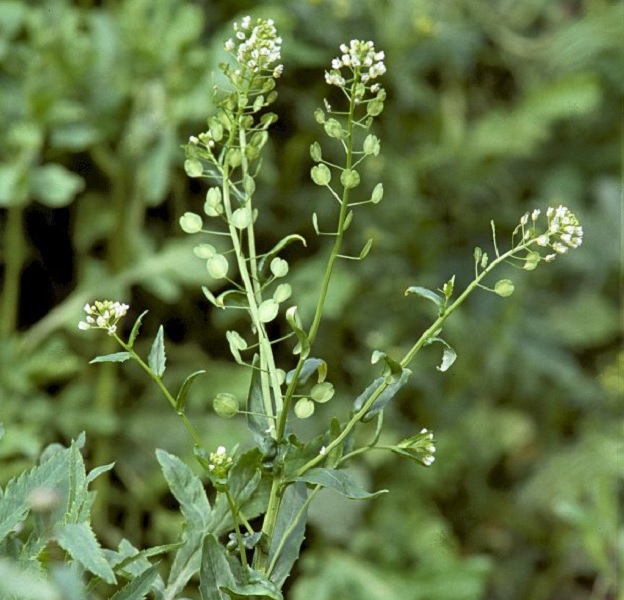Noccaea virens
(Noccaea virens)

Description
Noccaea virens, also known as Arabidopsis halleri subsp. gemmifera, is a plant species that belongs to the family Brassicaceae. It is a perennial herbaceous plant that is native to the alpine regions of Europe and Asia, and is known for its ability to tolerate heavy metal pollution in soil. Taxonomy and Etymology The species was first described in 1753 by Carl Linnaeus, who initially placed it in the genus Arabis under the name Arabis virens. In 2001, the plant was transferred to the genus Noccaea, which was created to separate it and other metal hyperaccumulating plants from the Arabidopsis genus. The specific epithet, virens, means "green" in Latin and refers to the plant's green foliage. Description Noccaea virens is a small herbaceous plant that typically grows to a height of 5-30 cm. It has a rosette of basal leaves and produces a flowering stem with small white flowers that are approximately 4 mm in diameter. The leaves are lanceolate in shape and can grow up to 7 cm long and 1.5 cm wide. The plant has a taproot that can reach depths of up to 1 m, allowing it to access nutrients and water in the soil. Distribution Noccaea virens is native to alpine regions of Europe and Asia, where it grows in rocky habitats at elevations ranging from 1,500 to 3,500 meters. It can be found in countries such as Switzerland, Austria, Italy, France, Germany, Poland, Russia, China, and Japan. Ecology Noccaea virens is adapted to living in environments with high levels of heavy metals, such as zinc, cadmium, and nickel. The plant has the ability to accumulate these metals in its tissues without being adversely affected, making it a hyperaccumulator. This ability is due to the presence of metal transporter proteins in the plant's roots and shoots, which allow for the uptake and translocation of metals from the soil to the plant's aerial parts. Noccaea virens is also capable of tolerating high levels of aluminum, which is toxic to many plant species. This makes it a valuable model organism for studying mechanisms of aluminum tolerance in plants. Uses Noccaea virens has been used for phytoremediation, which is the process of using plants to remove contaminants from soil or water. Its ability to accumulate heavy metals has made it useful for removing these pollutants from contaminated soils. The plant has also been used in the mining industry to extract metals from low-grade ores. Noccaea virens is also a valuable model organism for studying the mechanisms of heavy metal tolerance in plants. The plant's ability to accumulate heavy metals without suffering toxicity has been the subject of many studies, which have helped to improve our understanding of how plants can be used to remediate polluted environments. Conservation Status Noccaea virens is not currently listed as a threatened species. However, it is important to monitor populations of the plant in areas that are subject to heavy metal pollution, as it may be a valuable indicator of environmental contamination. Conclusion Noccaea virens is a small herbaceous plant that is known for its ability to tolerate heavy metal pollution and accumulate metals in its tissues. Its adaptation to metal-rich environments has made it useful for phytoremediation and as a model organism for studying heavy metal tolerance in plants. Its unique ecological niche and potential uses make it an important species to conserve and protect.
Taxonomic tree:







